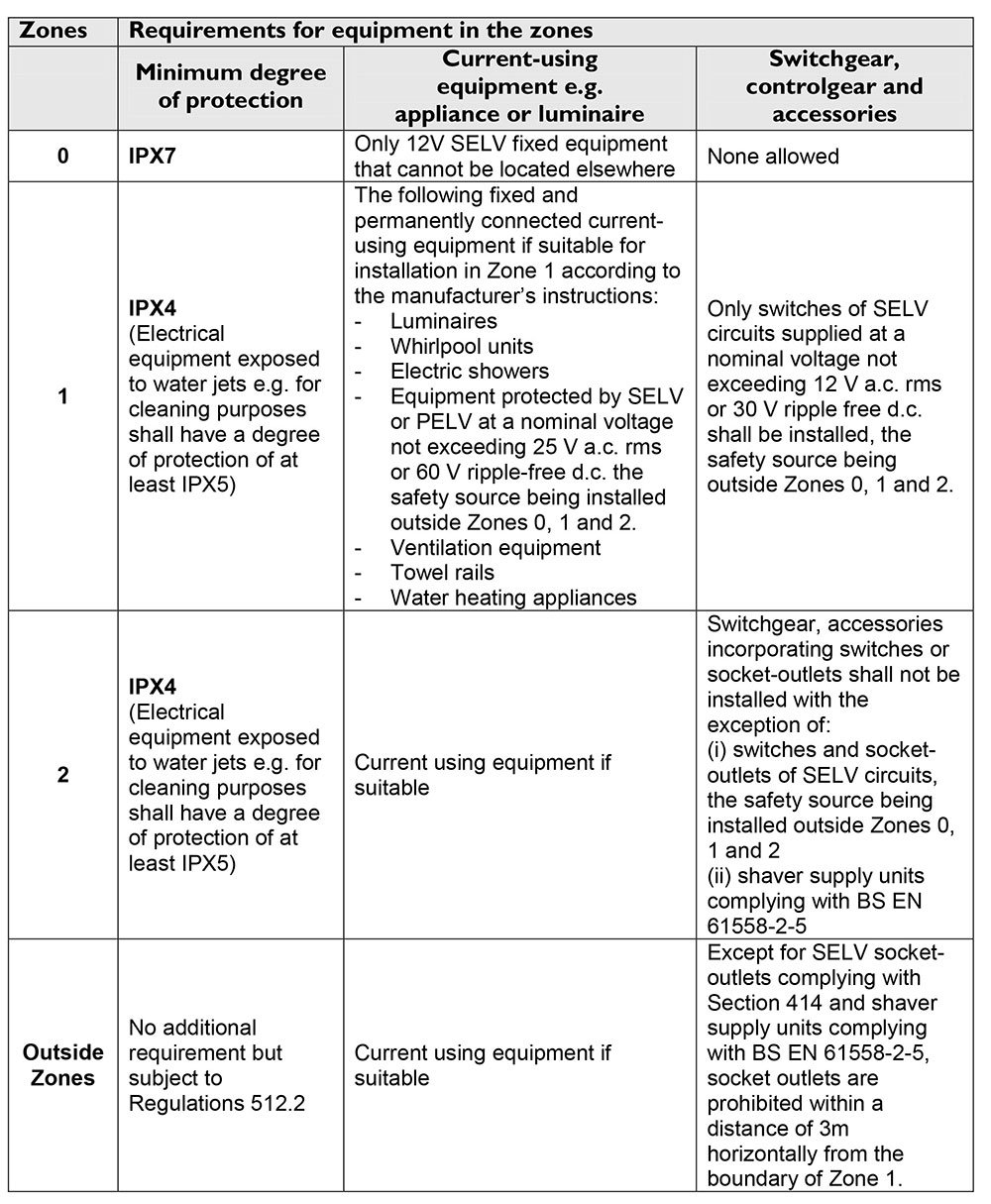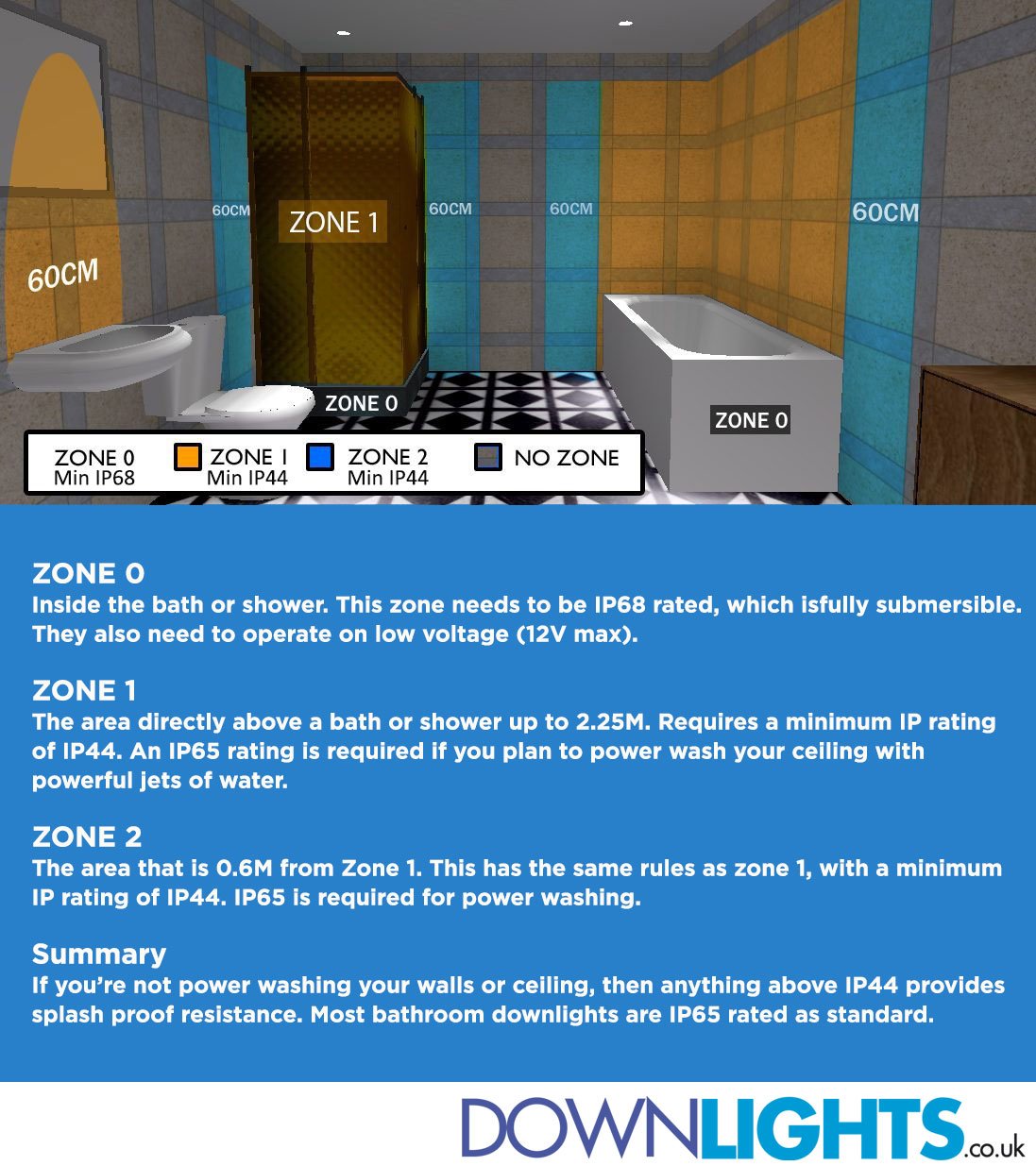What are Bathroom Zones?

The bathroom is split up into three different zones. The zonal requirements of each area are mainly dependent upon the risk level of water getting close to or touching the electrical supply. This would cause damage to the installation but more importantly poses a risk of electric shock. The three bathroom zones are:
-
Zone 0
This zone requires a minimum of IP68. This is the area within a bath tub or shower. Only 12V SELV (Safety Extra Low Voltage) equipment can be used. -
Zone 1
Requires a minimum of IP44. This is the area directly above a bath and within a shower cubicle, up to 2.25M in height. -
Zone 2
Same as above, requires a minimum of IP44. This is the area outside of the bathroom and shower zone.
For areas outside of these zones (formally known as zone 3), normal rules apply and no IP rating is required. However, when installing bathroom downlights we recommend installing all of them to at least IP44 or above so they match. It makes the room look better and they will have a higher resistance to steam. Steam could potentially cause lamp failure which could be be costly especially if expensive LEDs have been used. It could cost around £2 extra for an IP rated downlight or £4 to replace an LED. Most integrated LED downlights are IP65 rated as standard, so you don't always get a choice. If in doubt, install IP65 throughout your bathroom.
All circuits in a bathroom should be protected by a 30ma RCD (Residual Circuit Device). Although this is now common practice and is a requirement of Part P of the Building Regulations - it is worth double checking especially in older buildings.
To fully understand bathroom zones you should first have knowledge of IP ratings. IP stands for International Protection but is more commonly known as Ingress Protection. When X is used it means that protection against solids is not important.
Read More: Bathroom Lighting Tips & Ideas
IP Ratings Explained
An IP rating is a number that is given to specify the level of ingress protection of an enclosure or piece of electronic equipment. These ratings are determined by specific tests carried out by the manufacturer of the product or in an approved test laboratory.
The IP number is composed of two digits, the first referring to the level of protection against solid objects such as dust and the second against liquids such as water. The higher the number the better the protection level will be. Here are the main ones featured on this website:
- IP20 - touch proof
The 2 stands for protection against solids up 12mm square. Based on a persons finger.
The 0 stands for no resistance to water. - IP44 - limited water resistance
The first 4 stands for protection against solids up to 1mm square.
The second 4 stands for protection against water sprayed from all directions. IE resistant to splashes of water. - IP65 - water resistant
The 6 stands for total protection against dust.
The 5 stands for protection against low pressure jets of water. IE a pressure washer. - IP67 - submersible
Can be temporally submersed in water for short periods of time. From depths of 150mm to 1 metre. - IP68 - submersible
Can be left constantly under water. This would be a fully sealed unit.
Conflicting Information
Don't believe us or getting told conflicting information? Here is an official table from the Lighting Industry Federation:


More information about bathroom zones and wiring regulations can be found on the Voltimum website which includes an article written by the IET (Institute of Engineering and Technology).

